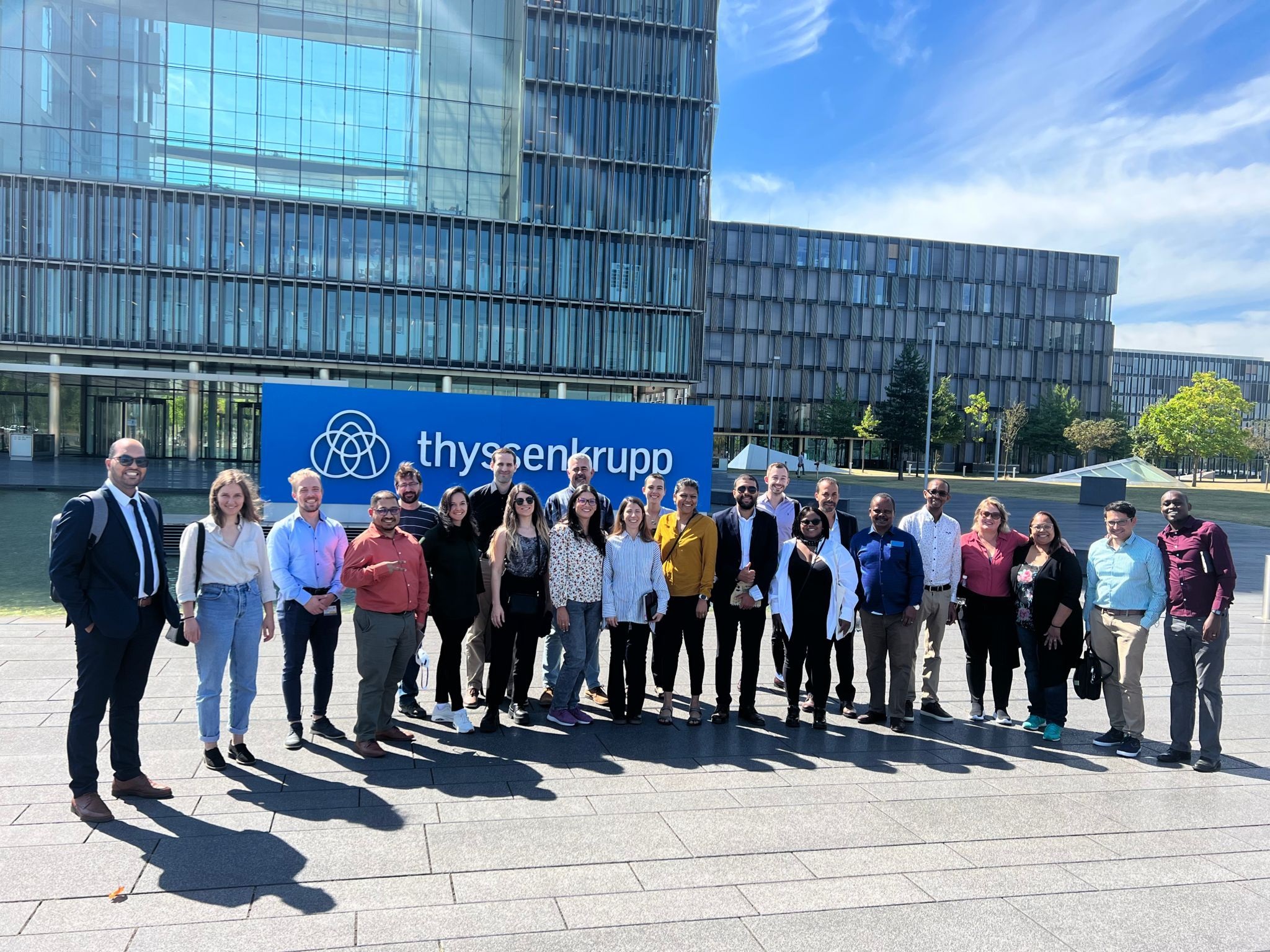Visiting ACHEMA, the leading fair of the process industry, started off the week of site visits for the delegation joining from Argentina, Brazil, Kenya, Morocco, Tunisia, and South Africa. At the fair, manufacturers and service providers from 50 countries presented their newest innovations in chemistry, pharmaceuticals, biotechnology, energy, and the environment: from producing polymers from algae to modular approaches for e-kerosene production as pioneered by Ineratec, which the delegation also visited on-site ahead in the week.
At the PtX Hub session “International perspectives on PtX” in the afternoon, the panelists each representing their countries made the connection – between the technical innovations to learn about during the day and how to leverage these for local economic development, job creation, and decreasing industrial emissions with PtX production – may it be for fuels, fertilisers for agriculture, or the chemical industry.
Power-to-Chemicals for a more sustainable and circular chemical industry
The entire week focused on the applications of PtX for the chemical industry. The industry needs and will still need hydrocarbons in the future. Therefore, the challenge presents itself: How can we produce hydrocarbons not from fossil, but renewable sources in the future? “Low hanging fruits” for the transition are direct hydrogen applications in the industry, as well as the production of hydrocarbons using green hydrogen and sustainable carbon sources. Grey hydrogen can simply be replaced by green hydrogen in processes such as oil hydrogenation and ammonia production. Ammonia, as a crucial component of fertilisers, also used for crop protection and antifungal agents, antibiotics, refrigeration, explosives, wastewater treatment, among many others, can be produced with less emissions with PtX.
However, for all these transitions, not just CO2 emissions, but the whole life cycle must be assessed in terms of sustainability considerations.

The panellists discussing PtX for local chemical industries. 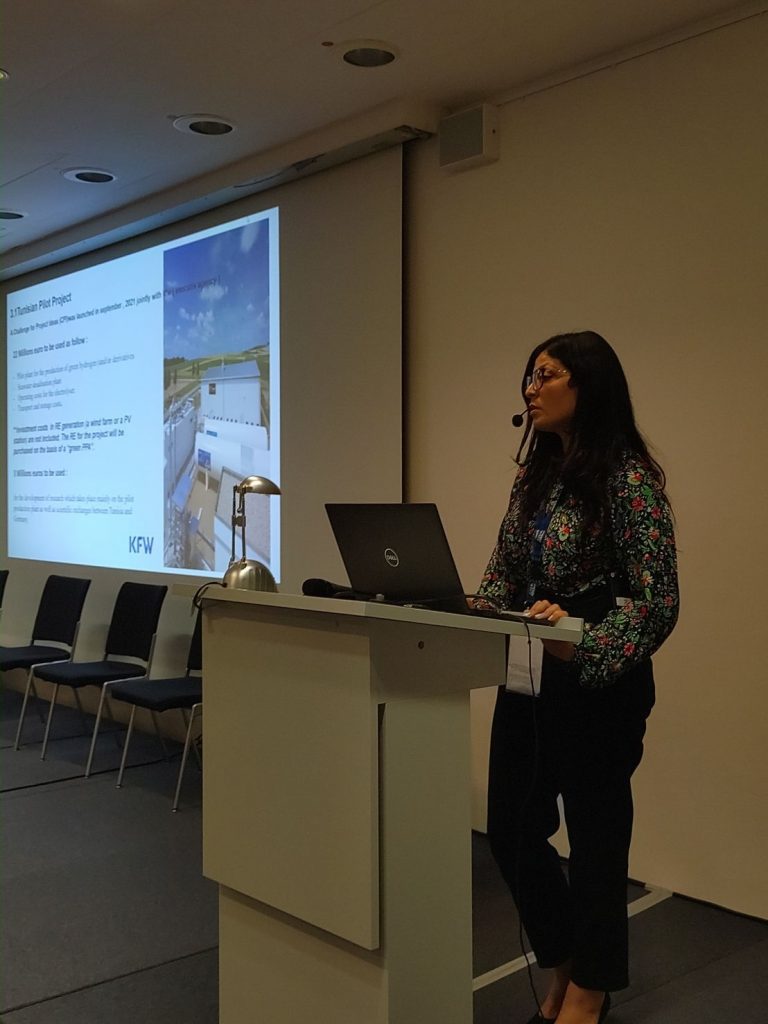
Balkis Jrad presenting the opportunities with PtX for Tunisia. 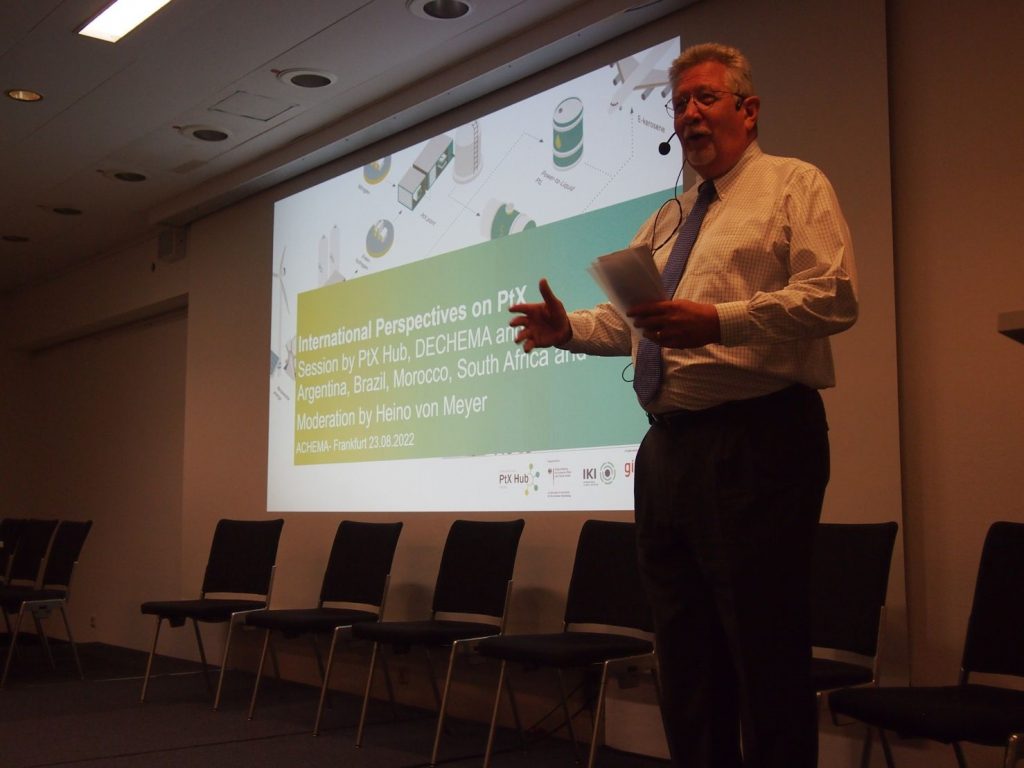
Heino von Meyer kicking off the session.
Opportunities and challenges ahead for the transition of local chemical industries
In the ensuing presentations, the perspectives of the partner countries then enriched the discussion.
Ayoub Hirt, Head of Department Green Chemistry, Bioenergy and Agritech at IRESEN in Morocco detailed the forecast that 130.000 jobs might be created in Morocco through the ramp up of local PtX production and export. It is expected that Morocco will reach low prices for PtX products, even in comparison to other African countries, and with regards to infrastructure, the existing pipeline between Morocco and Europe presents an advantage. Moreover, especially for ammonia, there is high local demand: Morocco is one of the main consumers on the international market.
For Tunisia, the strategic location close to Europe and existing pipeline infrastructure heighten the potential of producing cost-competitive green hydrogen and renewable PtX, presented Balkis Jrad, Head of Department of Project Evaluation in the General Direction of Electricity and Energy Transition at the Ministry of Industry, Mines and Energy Tunisia.
„Argentinian ports are already handling ammonia – so this is one PtX pathway of particular interest, especially as fertiliser costs are roaring globally and might be produced more cheaply locally.”
– Eduardo López, Researcher at the Chemical Engineering Pilot Plant (Plapiqui), National Research Council (CONICET), Argentina
Juliana Rangel do Nascimento, Energy Research Analyst of the Energy Research Office EPE – Brazil emphasised the potential to leverage Brazil’s longstanding experience with biofuels for the ramp up of PtX production. However, she also highlighted the need to act now: “we see the crucial importance of setting up a strong regulatory framework now, as otherwise, who will take the leap to take any investment?”
In the following panel discussion, Aradhna Pandarum, Acting Research Group Leader at Energy Centre, Council for Scientific and Industrial Research (CSIR) added the perspective of South Africa to the debate. The country is strongly focusing on a just energy transition, considering the high-paid, secure jobs in the coal sector that will need to be replaced. Furthermore, the country wants to leverage its many advantages such as having one of the world’s best solar and wind resources and being the world leaders in the use of Fischer Tropsch for synthetic fuel production.
Electrolysis live in action in Leverkusen
The following day, the group launched into the series of on-site visits of PtX plants around Western Germany. The first stop was at Thyssenkrupp nucera. Having built 2,500 plants for fertiliser, ammonia, plastics, polyester, and refining, the company is now looking towards making their production processes less climate-damaging. The visited “CarbonToChem” demonstration plant is currently producing methanol and ammonia with hydrogen from a 2 MW electrolyser. Using almost only already commercially available technologies, the process to be proven is the gas treatment and cleaning. The testing phase on feasibility is concluded, now the bankability is being tested until 2024, then to be commercialised.
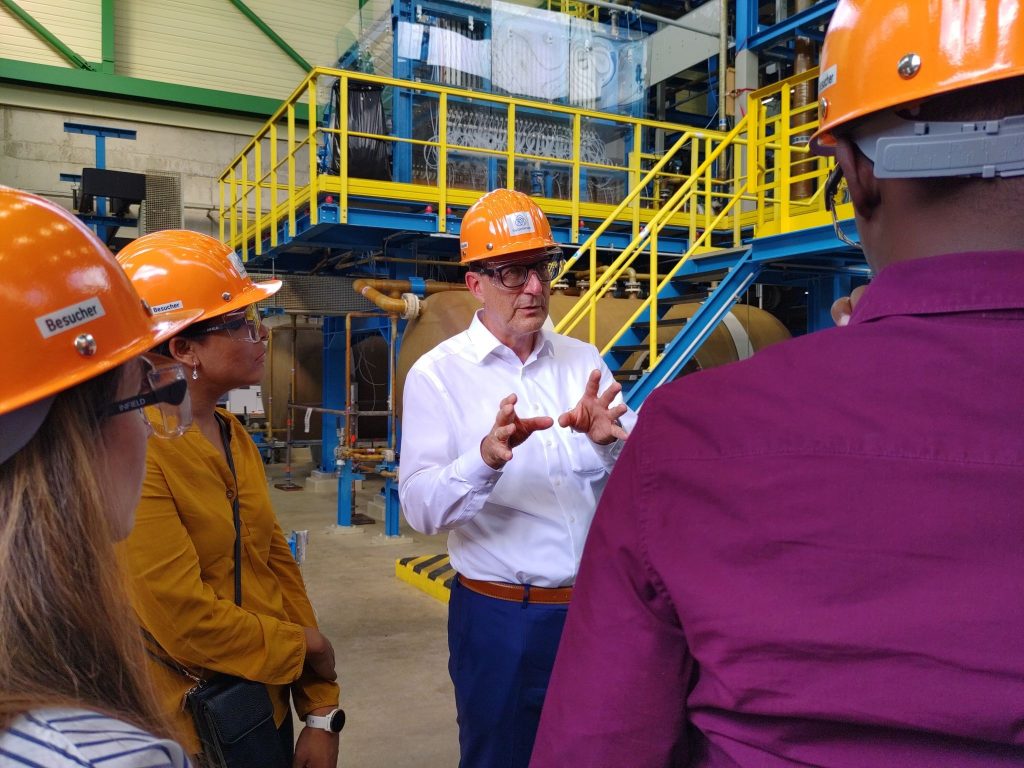
At the “Carbon2Chem” demonstration plant in Duisburg. 
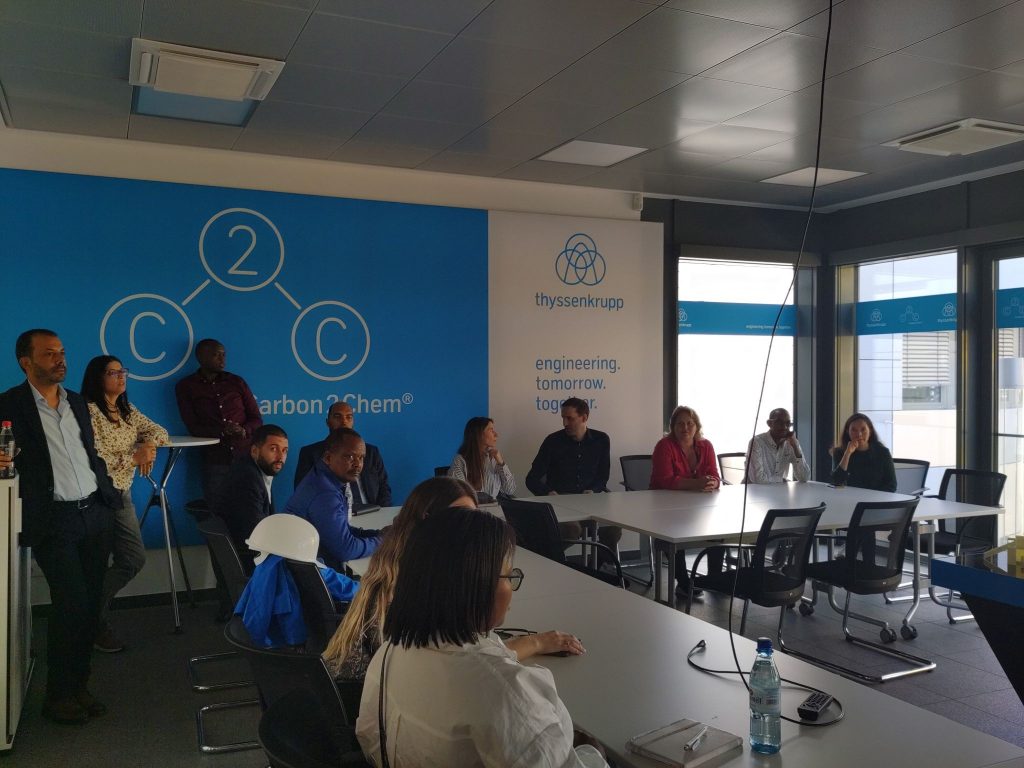
The latest research on green ammonia and methanol – and the confirmation that green ammonia production is lagging behind demand
Still touring the chemical industry in North Rhine-Westphalia, the delegation then visited Covestro, a polymer producing company, and the 480-hectare Chempark Leverkusen. There, 200 companies with 34.000 employees are producing more than 5.000 different chemicals. The Chempark has been operating since 1891.
At Covestro, discussions evolved about the premium prices for green products. The demand for it is currently highly consumer-driven, from furniture manufacturers planning to produce renewable mattresses to the automotive industry for greener cars. Another spotlight was put on the circularity of plastics production and consumption. One lever is to keep the complexity of the polymers as high as possible during the recycling process.
Piloting the modular approach to “Power-to-Anything”
On the last day of the trip, the Karlsruhe Institute of Technology (KIT) invited to their EnergyLab 2.0, where the institute tests all technologies needed for PtX production – among them Direct Air Capture, high and low temperature, PEM and SOEC electrolysis. The reactions and processes take place in containers – with this, they are also piloting the modular and decentralised approach.
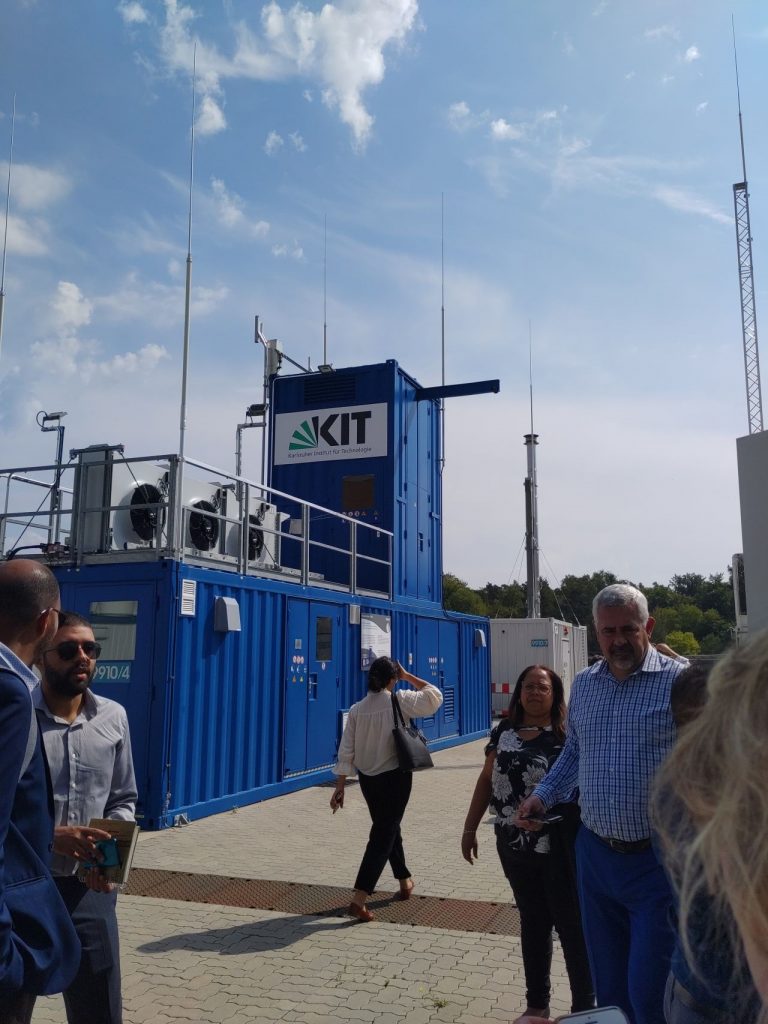
Visiting the EnergyLab 2.0 at KIT. 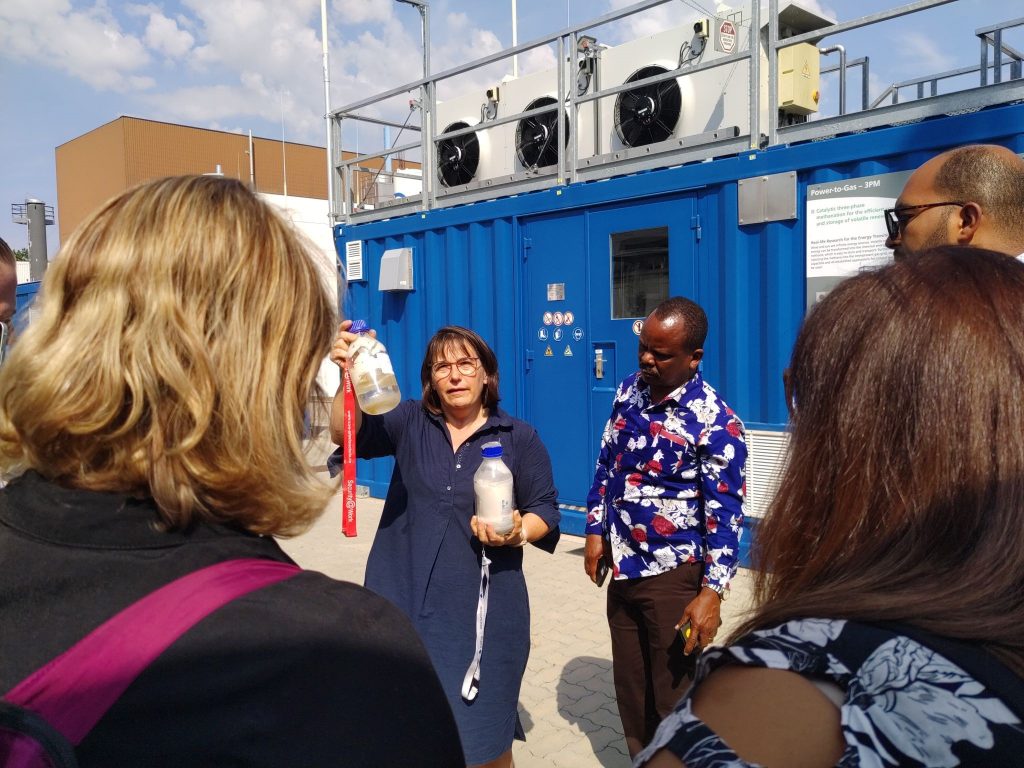

As co-founder of a spin off from the KIT, Philipp Engelkamp of Ineratec introduced the start-up providing PtX plants producing e-fuels and e-chemicals. Currently at the piloting stage, the company is building the world’s largest PtL plant IMPOWER2X in Frankfurt, Hoechst. It will produce 3.500 tons of e-fuels and e-chemicals and recycle 10.000 tons of CO2 per year. The innovative approach lies in the microstructured reactors for the Fischer-Tropsch process necessary to produce PtL from hydrogen and CO2.
Agreement on the need for close collaboration
“Our countries face so similar next steps: writing hydrogen strategies, setting up the regulatory systems, enabling financing… We must stay in contact and exchange and learn from each other.”
– Juliana Rangel do Nascimento, Energy Research Analyst of the Energy Research Office EPE-Brazil
Leaving after a week full of intense discussions, the delegation pledged to stay in contact, with each other and with the visited companies as technology providers. During the week, it became clear that distinct pathways are foreseen for each country, depending on local industries and their demand. But similarities came to light, too: an interest in decreasing dependence on ever more expensive imports of ammonia or fertilisers through setting up local production of green ammonia being the most dominant one.
